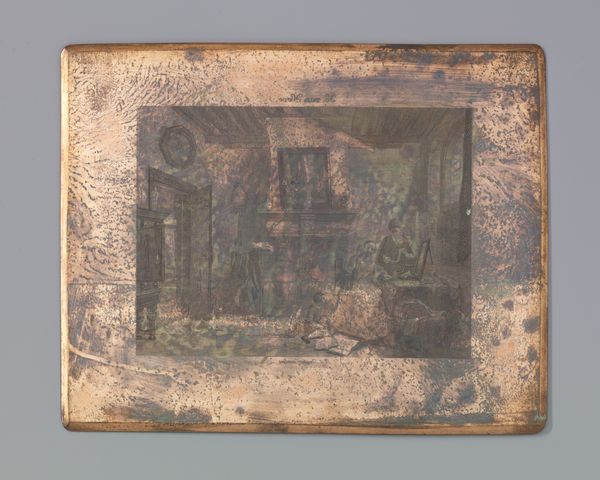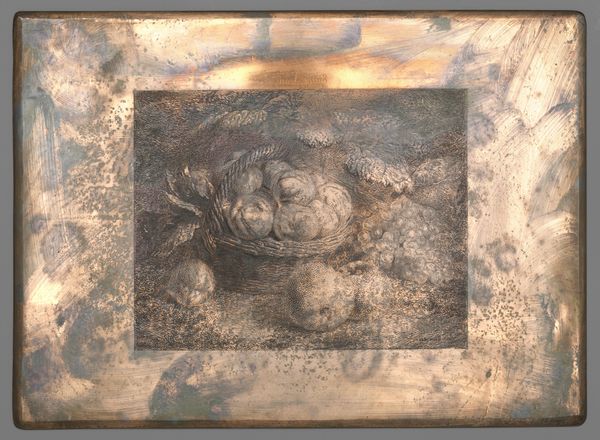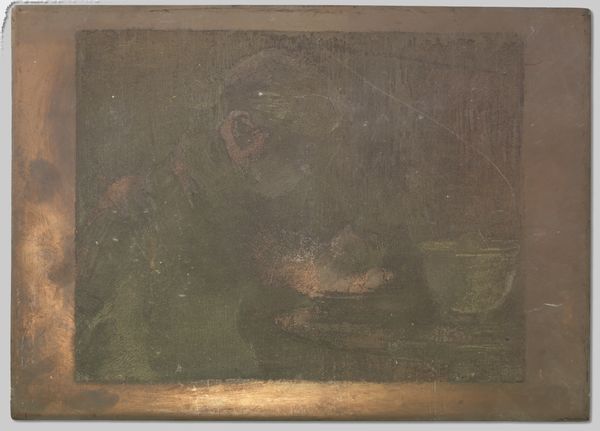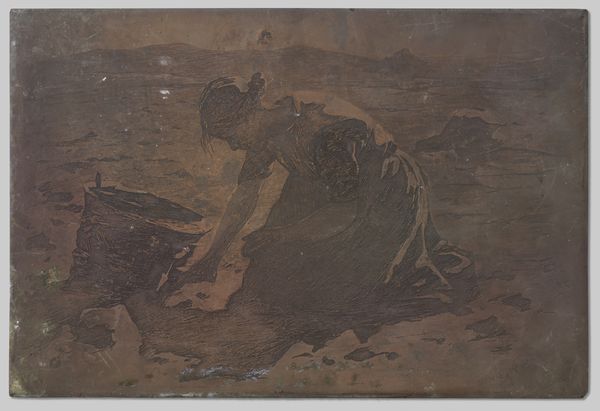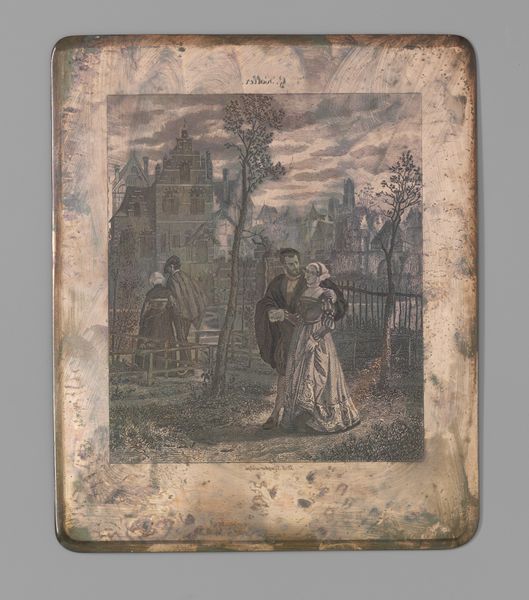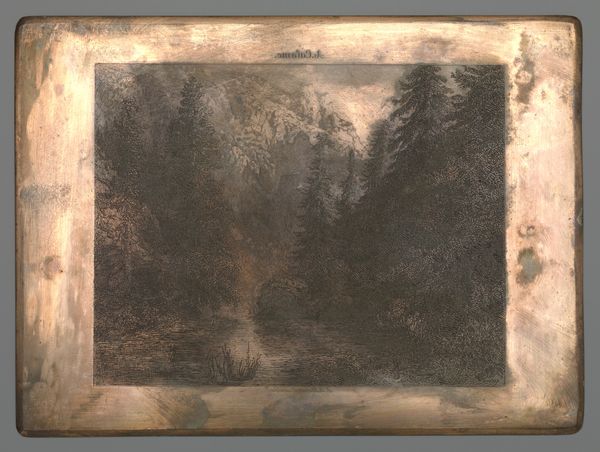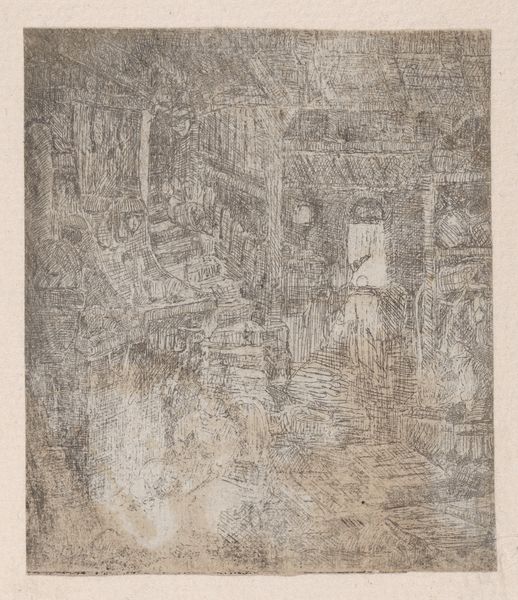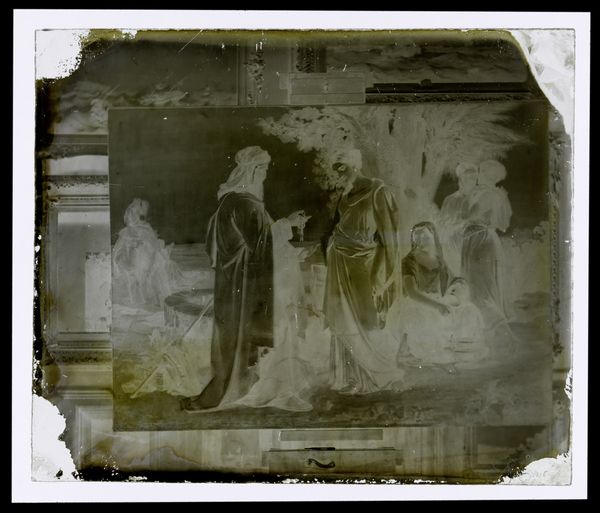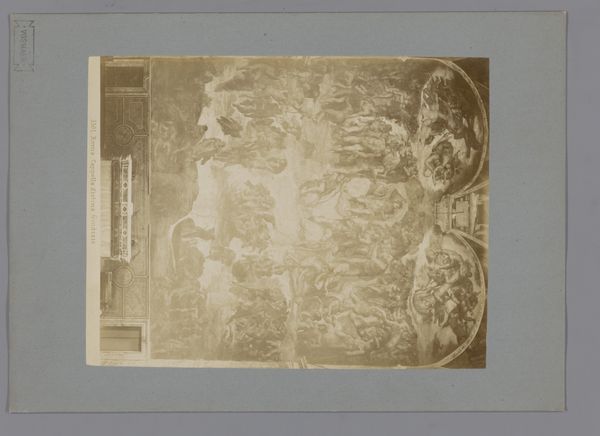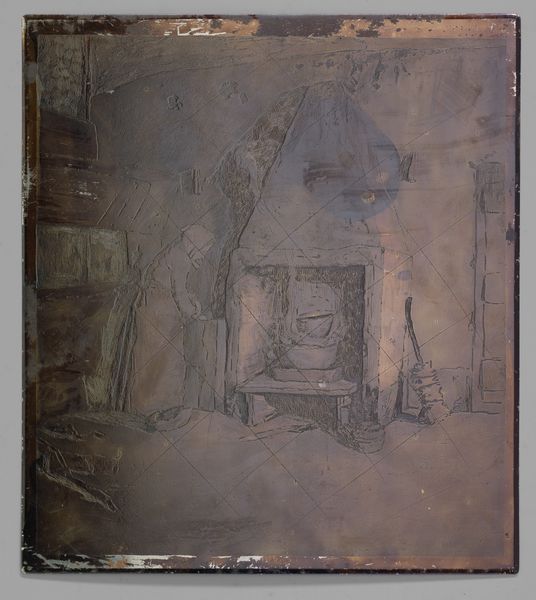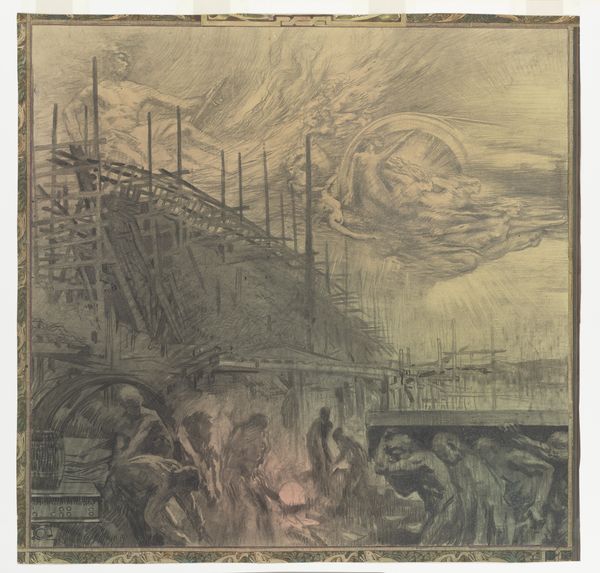
drawing, print, engraving
#
drawing
#
medieval
# print
#
figuration
#
line
#
genre-painting
#
engraving
#
realism
Dimensions: height 143 mm, width 188 mm
Copyright: Rijks Museum: Open Domain
Editor: Here we have Johannes Arnoldus Boland's "Huiselijke sc\u00e8ne," which translates to "Domestic Scene," made sometime between 1848 and 1909 using drawing, print, and engraving. It strikes me as a detailed yet somewhat gloomy interior scene. What formal elements stand out to you? Curator: Immediately, the dense cross-hatching commands attention. It constructs not just form, but also value, effectively controlling the fall of light and shadow within the depicted space. Note how the artist uses the density of line to define form and spatial relationships. How would you describe the effect of this technique on the overall composition? Editor: It seems to compress the space, making it feel confined and intimate. The linear quality flattens the figures, almost like a tapestry. I’m also struck by the very narrow value range – everything exists in shades of grey. Curator: Precisely. Observe, then, the composition's structure. We might discuss this using the term *repoussoir,* to address the way darker forms at the foreground frame the lighter middle-ground and further recede into shadow and ultimately an indefinite space at the back. To what extent is there a creation of depth here? Editor: The figures at the back of the space seem undefined, maybe creating an intentional atmospheric perspective due to the limited tonal variation in that portion of the print. They lack clear outlines and feel somewhat integrated with the background. Is this solely a question of formal technique, or could it also carry thematic weight? Curator: Undoubtedly. The formal properties shape our experience, subtly evoking the domestic scene you noted at the outset, in all its layered complexity and the ambiguous character of that concept. It certainly draws our eye and invites further reflection upon line and value as potent formal properties. What further observations can you glean about our relation to that constructed space, considering how it positions and involves us, as the implied observer, within the artistic presentation? Editor: I see it now. Considering it less like a slice of observed life and more like a study in how light and dark, line and shape create form, the viewing experience evolves quite a bit! Curator: Indeed. A focused viewing predicated upon compositional and relational awareness opens entirely new and compelling vistas of art appreciation!
Comments
No comments
Be the first to comment and join the conversation on the ultimate creative platform.
